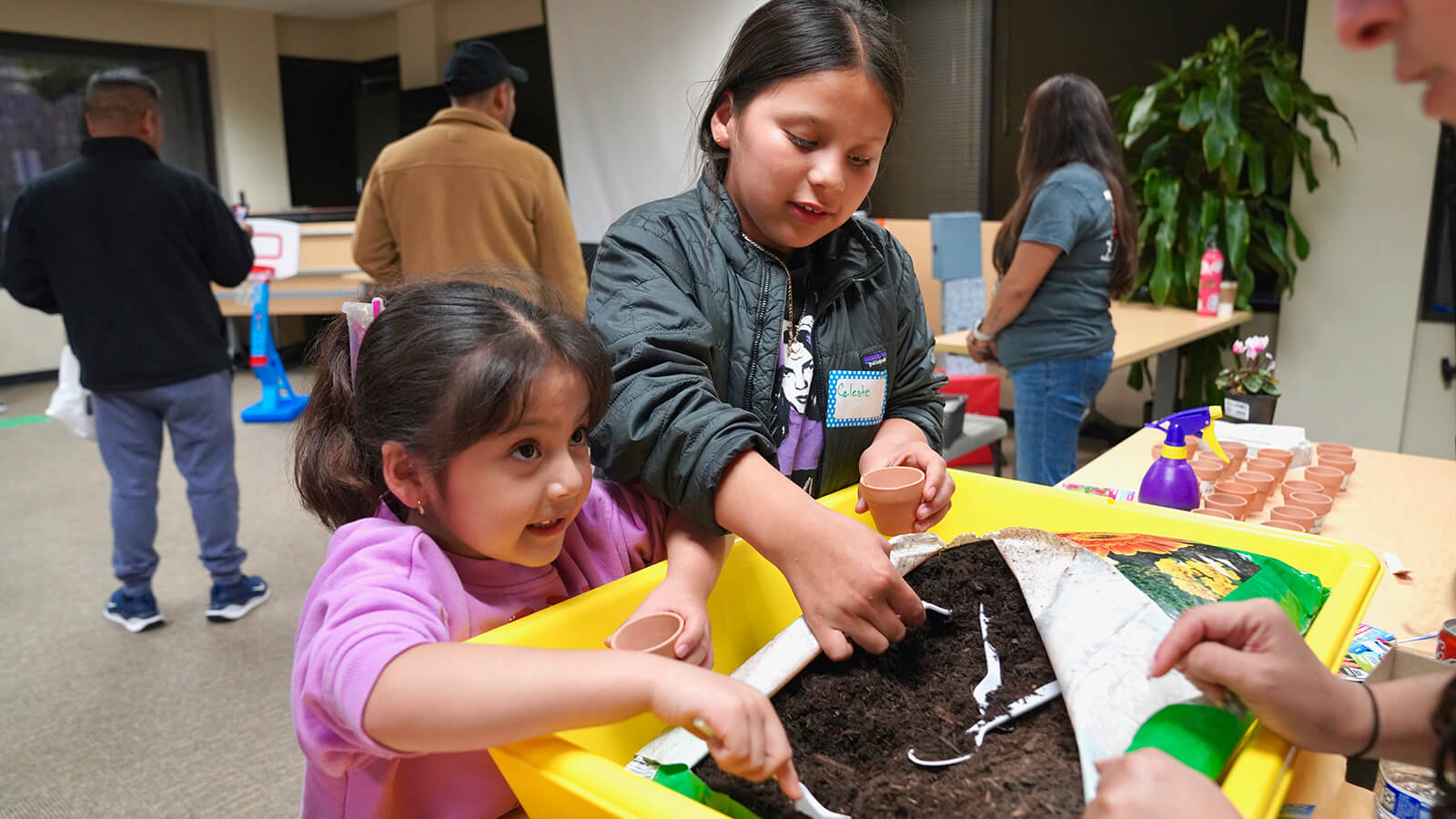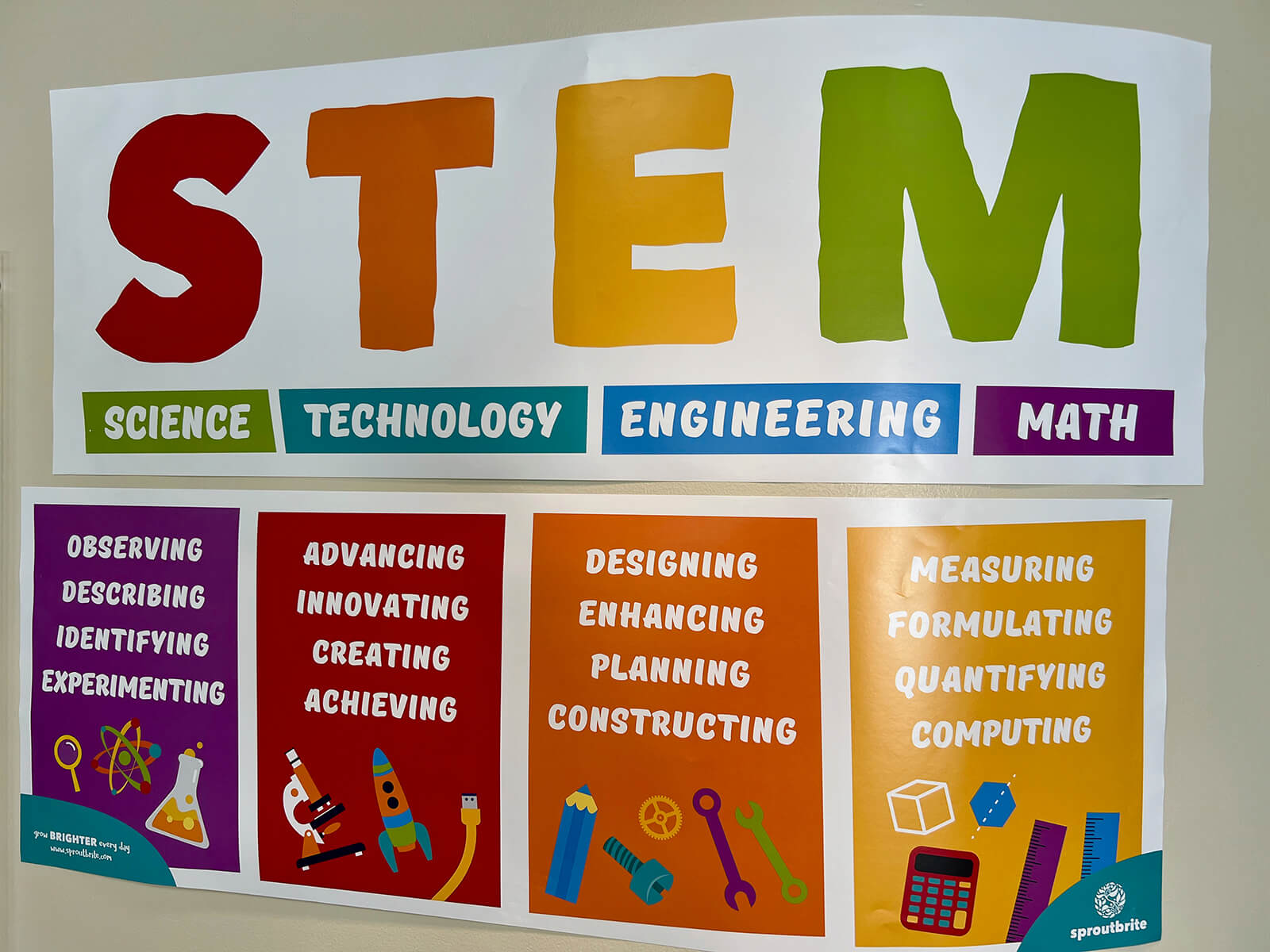You may have heard about STEM, maybe in a parenting magazine, or at your child’s school. But what is it? STEM stands for Science, Technology, Engineering, and Math. While these disciplines seem fit for higher education, they can be introduced and explored at any age. In early childhood education, teachers, parents, and care givers can explore meaningful experiences for young children and babies that can lead to a lifetime of curiosity in STEM. Here are some simple ideas you can try at home.
Science
Science encompasses several areas of study. One simple life science experiment could be sprouting beans. To make it happen, this is what you’ll need.
- Dried beans (such as lima beans)
- Paper towels
- One Ziploc bag or glass jar
- Water
Instructions
Wet the paper towel and place one to three beans on one side of the wet towel and place inside of a Ziploc bag or glass jar. Don’t fully cover the beans. Tape the Ziploc bag on a window, or place the jar on a window sill (ledge) to make sure it gets plenty of sunlight. Every couple of days ensure that the paper towel remains wet but not soaked. You should see a sprout in a few days.
Other simple science experiments include going for a nature walk and collecting natural items such as pinecones, acorns, rocks, shells, sand, feathers, sticks, or leaves. These items can be sorted and classified (using math), or you can have your child draw and observe the properties of each item.

Technology
Technology may feel like the easiest yet hardest piece for young children. With so many warnings about young children using tablets or phones at increasingly younger ages, it is hard to know when to appropriately introduce technology, and yet, it is impossible to ignore. Here are some simple tips to help keep your children learning while maintaining a healthy exploration for them.
Technology can expand our knowledge about the world around us. You might try reading a book, and after your child becomes familiar with it, you can use the internet to research more on the subject. For example, a book about farm animals might stir an interest in chickens. What do they sound like? What kinds of chickens are there? What do they eat? Where do they live? Appropriate pictures and videos can be found on the internet.
Another way you might teach technology is to introduce coding. This may seem somewhat abstract, but it’s really just simple patterning techniques. The best way to get little ones to recognize patterns is to get them moving. Here’s what to do.
Instructions
Create a simple movement routine. For example, clap twice, then pat your lap once. “clap, clap, pat… clap, clap, pat.” You can move your baby’s arms to accomplish this. For slightly older children, create a second pattern. For example, stomp each foot once, then jump. As your little one gets better at the movements, put them together. Decide how many times you’ll do each pattern before moving onto the next. It may look like this: “clap, clap, pat… clap, clap, pat… stomp, stomp, jump…repeat.”
Engineering
Engineering is a favorite for all children. Consider blocks, or really anything in your home that is stackable, such as Tupperware or shoe boxes.
Instructions
Young children are constantly working on their balancing skills and how to manage their fine motor muscles, so stacking can be a real challenge. As their stacking towers fall over, offer them encouragement to try it again. This activity strengthens their problem-solving skills and ability to understand how gravity and other physical properties work. Babies explore engineering by knocking things over.

Math
Math is also an area of endless study. It includes things like counting, adding/subtracting, patterning, measuring, shapes, or classification. Math can be done at any time and any place using whatever you have around you to engage your baby or toddler.
Instructions
Try these fun examples. If your child is snacking on crackers, point out the shape of the cracker with your child by saying, “This cracker is round. It is the shape of a circle.” Run your finger along the edges to show how the line moves, or you might try counting with your child by asking, “How many crackers do you have? Let’s count. One, two, three…” If your child eats one of those crackers, you can point out the subtraction by saying, “You had three crackers, and then you ate one. Now you have two.” Use your fingers to support your words. Even babies can get involved by telling them, “I’m going to give you three kisses. One, two, three.”

The Joys of STEM
Doing STEM activities doesn’t have to be complicated. There are endless possibilities using items in your immediate environment. The most important part is to encourage curiosity and allow your child ample time to explore. Ask questions out loud so your child can wonder with you. Comment on their explorations. Give them the words to identify what they’re discovering. And most importantly, have lots of fun doing STEM activities with your child.
Share This Story


